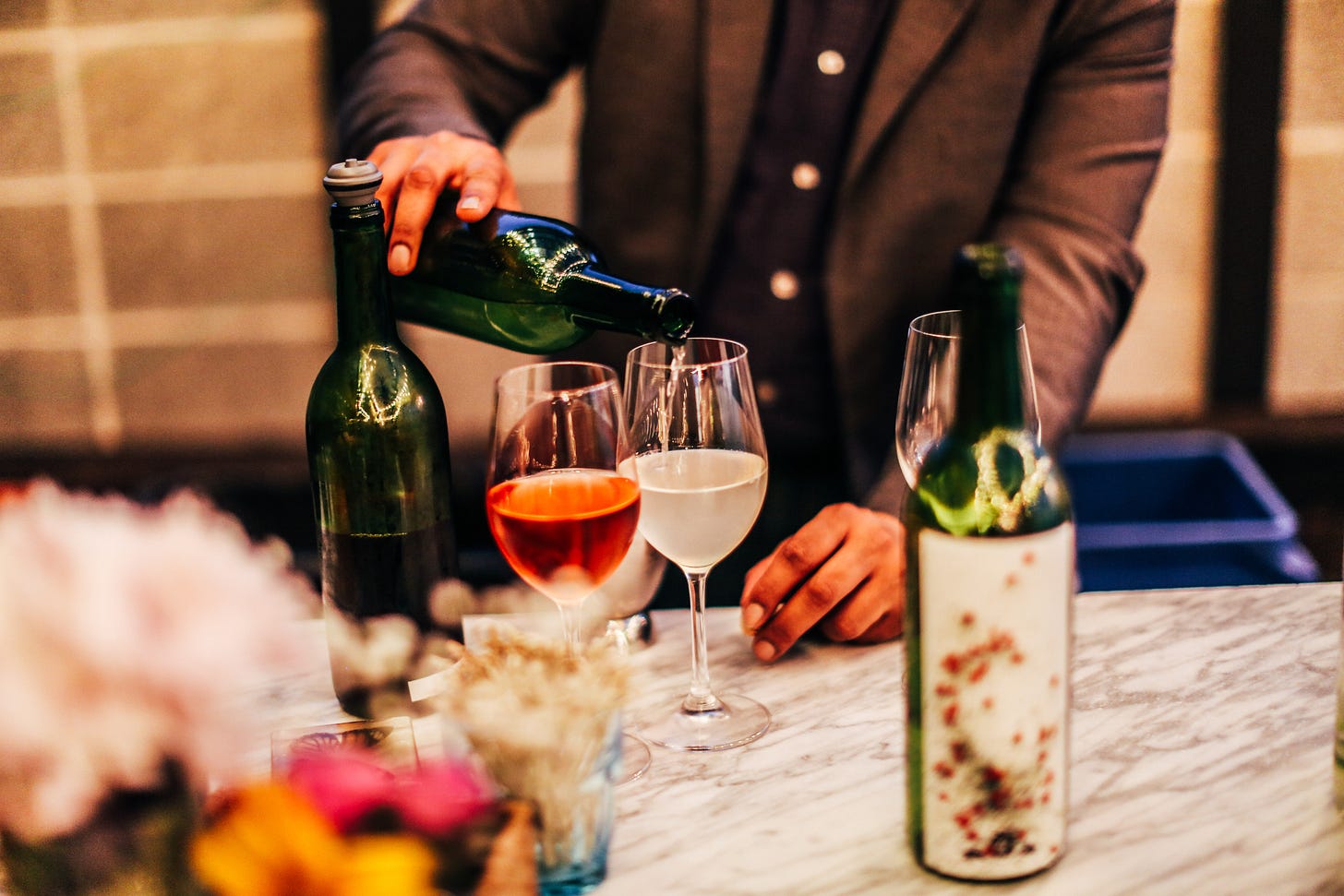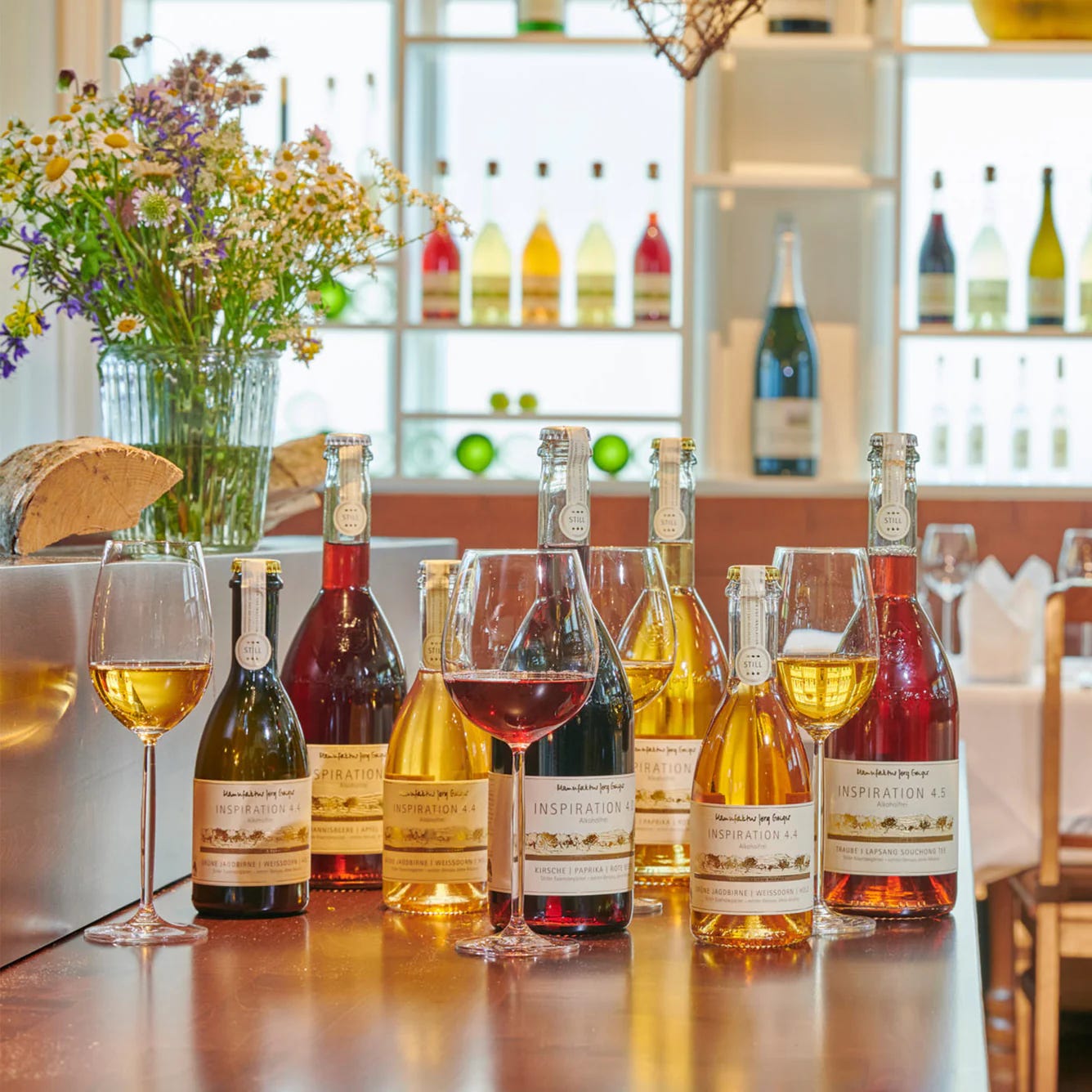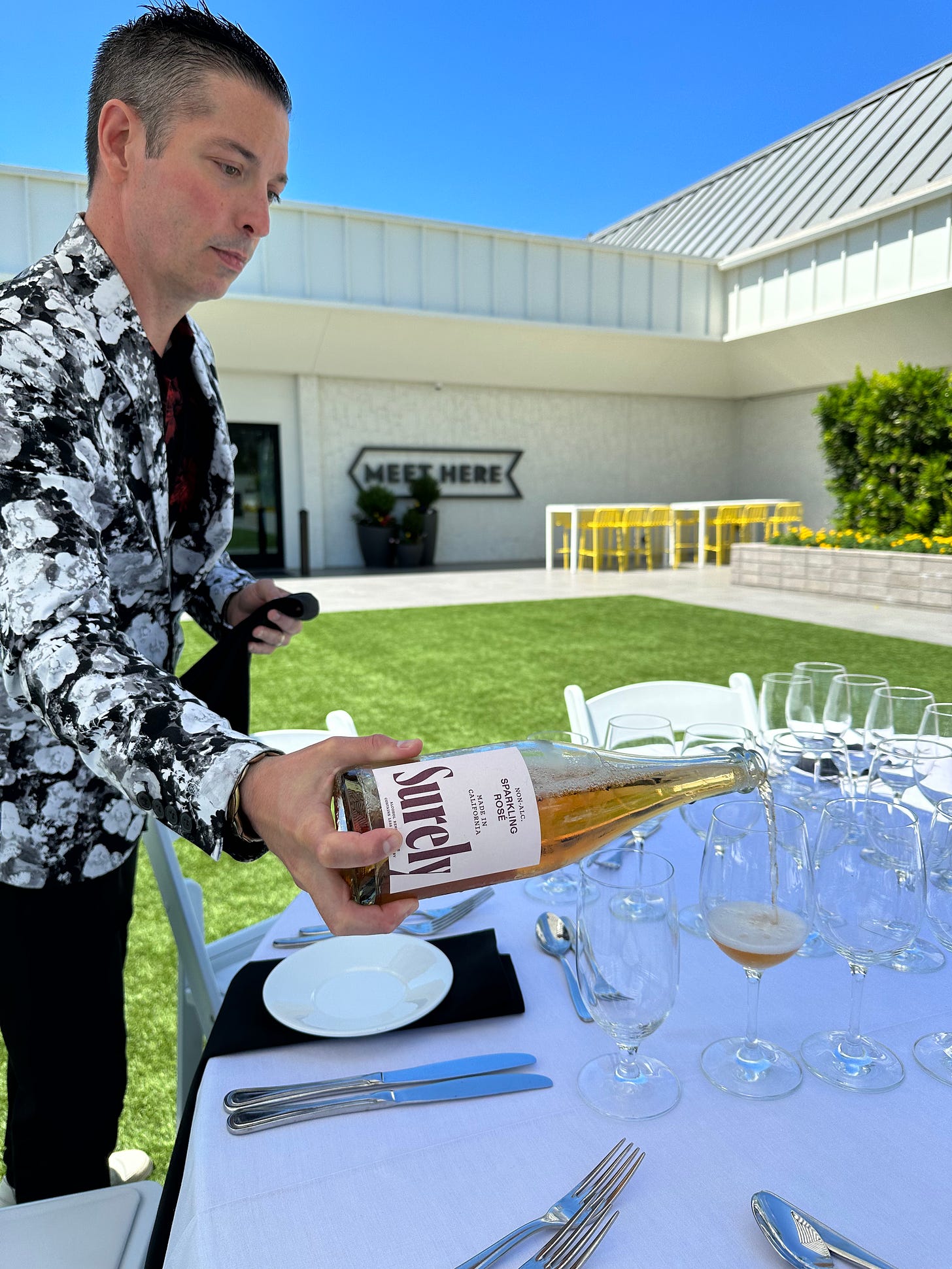Non-Alcoholic Wine Doesn't Suck Anymore, But It's Also Not Always Wine
The breadth and quality of non-alcoholic wine replacements has greatly improved.

There was a time when non-alcoholic wine was hardly passable as good grape juice, let alone good wine. It languished somewhere in between––not sweet or simple enough to be served to children, not complex or dry enough to be served to adults. In that sense, it reminded me of the numerous teen movie adaptations of Shakespeare’s plays where the very best part of Shakespeare is often removed, his words.
This week, I had the chance to speak on the subject of non-alcoholic wine at SommCon in San Diego. My presentation, “Adding Zero to Your Pairings: Matching Non-alcoholic Beverages with Food” with Maria Bastach and Laura Silverman of Zero Proof Nation was an overview of wine replacements. The main message: things have changed. These replacements are not what they were in the past––a simple facsimile or lesser than wine. They can be as complex and sophisticated as wine (by which I mean grape wine with alcohol) and, just like wine, they’re almost as varied in their production and styles.
A Rosé By Any Other Name
There have been many discussions about naming conventions for wine replacements when they’re not, strictly speaking, wine. I like the phrase “wine replacements” because it seems the most obvious. These are enjoyable, complex beverages that go well with food and serve the same purpose as wine, poured by the glass. But, also, they’re replacing wines with alcohol for those who aren’t drinking alcohol on an occasion or ever.
By definition, that expands the category. De-alcoholized wines alone increased the number of wine replacements by over 20% from 2021 to 2023, but there are far more options than just de-alcoholized wines. I realize that may take some explaining, so below are what I see as the categories of wine replacements with examples.
De-alcoholized Wine
When people talk about non-alcoholic wine, de-alcoholized wine is usually what they mean. This is wine where the alcohol has been removed by one of three processes: vaccum distillation, spinning cones, or reverse osmosis. Very science-y sounding things, but they’re mechanical processes that have existed since the early 20th century, starting with Carl Jung. (Not that Carl Jung, the other Carl Jung.)
De-alcoholized wine is made by existing wineries like Leitz in Rheingau, Germany and Giesen in Marlborough, New Zealand. And by companies that purchase the wine from wineries and de-alcoholize it, such as Surely––for whom I work (though Surely is also doing wine alternatives now, too)––and Thomson & Scott.
For de-alcoholized wine, the variety of grape may be listed on the bottle, such as Syrah or Sauvignon Blanc. Or the bottle might say red or white (“rouge” or “blanc” in the French wine vernacular). Very rarely do they include the vintage or specific region, though the first to do so, Oceano from San Luis Obispo, California, is launching their pinot noir next month.
De-alcoholized wines can be white, red, rosé, or sparkling. But I have yet to see dessert or fortified wines with the exception of vermouth, which is often considered as more of a spirit. (If you want to go the vermouth route, buy a bottle of Roots Divino or try Lyre’s Apéritif Dry or Apéritif Rosso.)
Wine Alternatives
Wine alternatives is the “anything goes” category, and it’s my favorite because it most resembles cocktail making, utilizing a vast array of ingredients from fruit juices to teas. It might be suggestive of white, red, rosé or sparkling––even natural wine––but it’s also carving out new styles as well.
The names of the wine alternatives sometimes harken back to wine terminology or regions. For instance, Proxies’ Blanc Slate, a cheeky reference to soil types. But they can also be abstract or ingredient-focused, such as Non, which lists its dominant flavors on the label along with a number for each blend.
Wine alternatives are often still grape-based, utilizing verjus, a tart unripened grape juice, or de-alcoholized wines. As hinted at above, Surely has recently been using teas and natural flavors to enhance its new red blend made with a base of Cabernet Sauvignon and Petit Sirah. To me, this is the best of both worlds. Start with a base of de-alcoholized wine and then add ingredients that help bolster the shortcomings of the alcohol-removal process.
German producer Jörg Geiger does something similar with de-alcoholized ciders as the base. Though he will occasionally add grape juice, too. An example of the range of ingredients he uses comes from his Inspiration 4.5: de-alcoholized heritage cider, juice of Schwarzriesling, Portugieser, Kerner and Müller-Thurgau grapes, aronia, lapsang souchong tea, and extractions from herbs, flowers, and spices.

Fine Kombucha and Blended Teas
This category takes us further outside of the idea of grape wine but includes non-alcoholic beverages that still fulfill wine’s primary functions to be drunk with food and friends. This includes kombucha, which is a traditional beverage made from tea, sugar, and juices. But it’s not necessarily the kombucha sold at your grocery store in a stout medicinal bottle. That’s why I used the distinction of “fine kombucha,” it’s kombucha made at the highest level.
Unified Ferments is a great example of this style, which uses kombucha as a base and adds single-origin teas. These can be among the most weird and “funky” wine replacements, which scratches an itch for those who love more adventurous flavors such as natural wines. One of their new releases has lapsang souchong, a smoky black tea dried over pine fires, for instance.
Fine Juice
Fine juices are juices made to be complex and interesting. They’re also called terroir-driven juices because they convey a sense of where the fruit is grown. Terroir is a French word that is meant to elicit the micro-geography and micro-climate as well as traditional means of production where the grape, or fruit, comes from.
A great example, which I’m a huge fan of, is La Ferme d’Achille “Argouille” from Quebec, which is made from sea buckthorn juice, maple syrup, and spring water. It has no corollary in the wine world, but pair it with duck a l’orange with persimmons and you’ll see why it can easily stand in for wine.

Verjus
Lastly, there’s verjus, which I already mentioned is unripened grape juice. It can be both sweet and sour, tasting like a fruity vinegar. At least you can add it to salad dressing with good results. However, it often carries a lot of the characteristics of the grapes that we love, especially from white grapes. I’m completely smitten with Navarro Vineyards Gewürtztraminer Verjus, which has all the lovely floral and tropical notes of Gewürtraminer. Other winemakers like Wölffer Estate in Long Island, New York and Old Westminster in Westminster, Maryland are also producing quality verjus.
With such a diverse array of wine replacements, there’s something for everyone. I’ll admit that these may not stand up to fine wines like the very age-worthy first growth of Bordeaux. My last sip of recreational alcohol was in 2019 (I still taste as part of my job) and it was of a 1982 Château Lafite Rothschild. I have yet to find its match in non-alcoholic replacements. But I also buy bottles to open and drink, not collect dust. And, trust me, these bottles will not be collecting dust on your shelves.
It’s great that we have these options, and I love sharing them, but I’d also love to hear from you. Are there any wine replacements you’ve tried that don’t suck? If so, leave them in the comments.
Derek Brown is an author, award-winning bartender, NASM-certified wellness coach, and founder of Positive Damage, Inc.
This newsletter is free and public. Share with anyone you think will enjoy it.





The challenge is to get distributors to add these to their books!
Concise and easy to understand without getting to granular. And thanks for the mention!